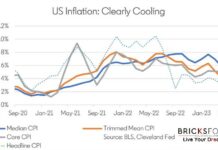After half a decade of planning, changes to laws governing accessory dwelling units (ADUs) and detached accessory dwelling units (DADUs) were passed by the Seattle City Council.

Even though ADUs have been allowed since 1994, only 1.61% of 135,000 lots in
single-family zones have an ADU owing to numerous cumbersome rules and regulations. We think this legislation is a step in the right direction. It creates meaningful changes to provide flexible, affordable housing options for families, homeowners, and renters. As per the latest NWMLS market report, the median price for a home in Seattle is $781,000. This makes 75% of Seattle off limits to new neighbors who do not have a down-payment or can’t rent a whole house. We have apartment bans in 75% of the city. ADUs are one way to induce mixed-income neighborhoods and more equity. They also help homeowners afford to stay in their homes by generating supplemental rental income and promote inter-generational living. It will help cut people commutes by putting affordable ADUs closer to work.
Here are the highlights from this legislation:
- Reduces the minimum lot size from 4,000 square feet to 3,200 for single family homes.
- Allows two ADUs on one lot instead of one.
- Allows DADUs of up to 1,000 square feet, the same size currently allowed for ADUs
- Eliminates the requirement for the Homeowners to live on the lot containing an ADU in order to rent it out.
- Removes a requirement for off-street parking, an expensive and onerous hurdle.
- Increases maximum households’ size to 12 unrelated people on lots with two ADUs
- Increases DADU height limits by 1-2 feet, with flexibility for green building strategies.
- Limits Floor Area Ration (FAR) for SF 5000, SF 7200, and SF 9600 zones to 0.5, except that lots with less than 5,000 square feet of lot area can include up to 2,500 square feet of total chargeable floor area. This is intended to curb McMansions.
- Limits FAR in Residential Small Lot (RSL) zones to 0.75.
- Makes exemptions to Floor Area Ratio (FAR):
- Up to 250 square feet of garage won’t count against FAR.
- Neither will up to 35 square feet of dedicated bike parking.
- Houses that already exist on the lot get a one-time pass to expand up to 20 percent past the limit.
- All stories, or portions of stories, that are underground.
- All portions of a story that extend no more than 4 feet above existing or
4 finished grade, whichever is lower.
Here’s where the ADUs come in: They don’t count against FAR.
Durkan signs Executive Order to encourage more affordable ADUs
On July 9th 2019, Mayor Jenny A. Durkan signed this legislation and an Executive Order to advance the development of more (ADUs) like backyard cottages and in-law apartments in single-family zoned neighborhoods throughout Seattle.
Following are the highlights from this Executive Order:
- Assisting homeowners navigating the complex design and permitting processes:
- Pre-approved plans: The Executive Order directs the Department of Construction and Inspections to make pre-approved plans available at low cost.
- ADU Navigator: Additionally, the department will hire an “ADU Navigator” to guide homeowners through the permitting process.
- Resources website: The Office of Planning and Community Development will develop a website with a comprehensive inventory of resources to help connect prospective ADU owners with the design and construction community.
- Piloting strategies that support equitable ADU development and affordability among homeowners and tenants:
- Offer low-interest financing to help homeowners develop ADUs or habitable space through the Office of Housing’s Home Repair Loan Program.
- The City will also explore additional financing tools, including loan terms suitable to incentivize the affordable creation of ADUs.
- Convening a workgroup to advise on ADU programs and services provided by the City, including stewarding ongoing assessment to evaluate the effectiveness of our ADU regulatory changes, services, and programs within three years. (We think waiving building permit fees for 5 years, like the City of Portland, would have been a better incentive.)
The new regulatory rules will go in effect August 8, 2019.
What is the potential impact of this new law?
The city’s most recent environmental analysis estimated the new rules would result in 4,430 accessory units built (125% more vs. status quo) and 1,580 houses torn down over 10 years, versus 1,970 accessory units built and 2,030 houses razed under the status quo.

***
What is ADU and DADU?
An accessory dwelling unit or detached accessory dwelling unit (also called an in-law unit or a backyard cottage) is a separate living space within a house or on the same property as an existing house. These units aren’t legal unless they have been established through a permit process. A legally permitted unit in the home is called an accessory dwelling unit (ADU). A legally permitted unit on the property (but not within the home) is called a backyard cottage or detached accessory dwelling unit (DADU).
***





